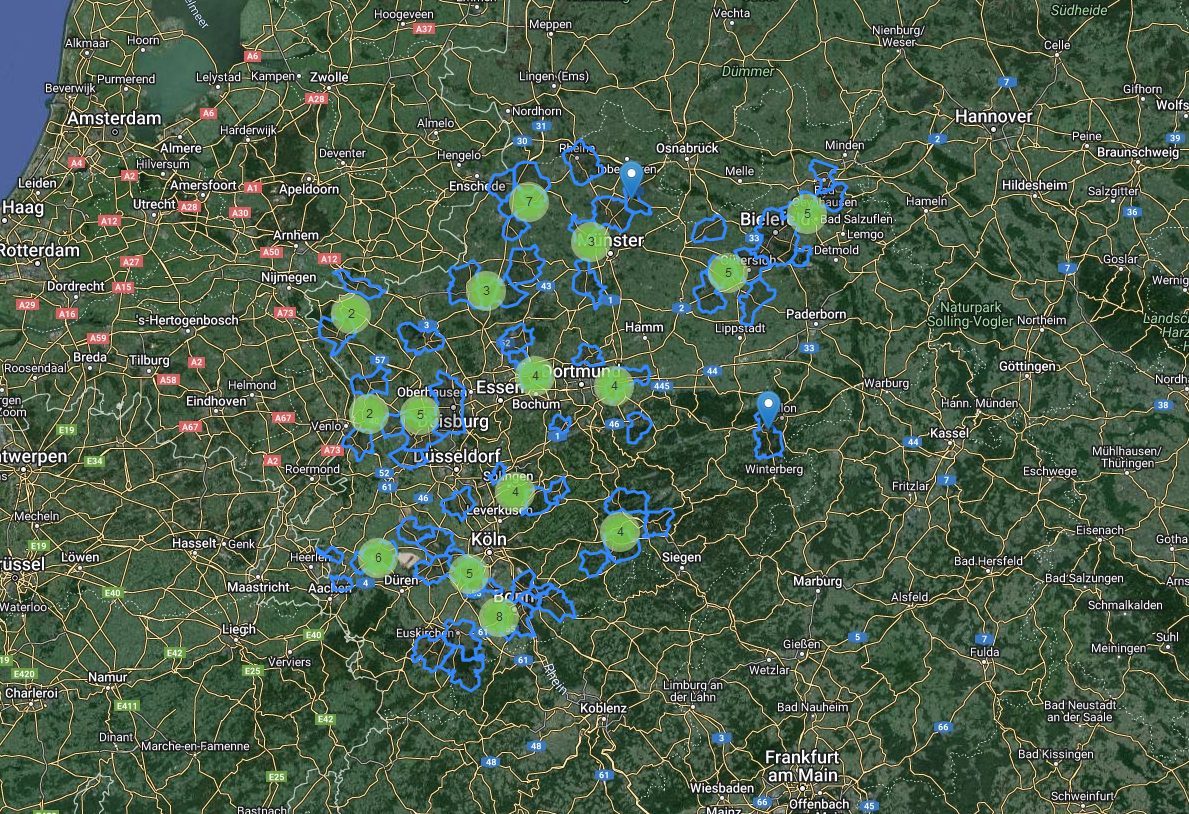An ideal location is crucial for success in retail. Whether pedestrian frequency, competitive situation or purchasing power - various factors play a role.
With our location analysis tool Business Location Explorer © you can analyze all politically independent cities and municipalities in Germany.
- Data base: All > 10,700 cities and municipalities in Germany
- Easily narrow down geographical search area
- Use location factors such as proximity to the motorway, purchasing power, population, and much more.

Why is location analysis important in retail?
The choice of location has a significant impact on customer volume and sales. A location analysis reveals potential and risks that are not apparent at first glance. Customer frequency, visibility and accessibility are key success factors, particularly in retail.
- Customer frequency and walking routes
- Competitive situation
- Proximity to target groups
- Economic potential and purchasing power
The most important factors of retail location analysis
A comprehensive analysis takes internal and external factors into account. These aspects are particularly important:
- Demographic analysis: What is the population structure around the location?
- Competition analysis: Which competitors are nearby?
- Purchasing power analysis: What is the income and purchasing power in the region?
- Accessibility: Is the location easily accessible on foot, by public transport or by car?
- Visibility and attractiveness: Is the store clearly visible and attractively designed?
Methods and implementation of a retail location analysis
There are various methods available for a precise location analysis. Do you already know the city in which you want to open a new location? Then you can start directly with the micro-analysis.
Macro Analysis in Retail
If the location is to be expanded in another region (e.g. new branch location), a macro analysis is first carried out. Suitable cities are identified based on location, purchasing power, population, etc. Our location analysis tool Business Location Explorer © will help you with this macro analysis.
Microanalysis in Retail
Microanalysis involves taking a closer look at cities and towns with the aim of identifying the most suitable streets within a city.
- Pedestrian frequency counting: How many potential customers pass by every day?
- GIS systems: Geographic information systems can be used to map customer flows and demographic data.
- Surveys: Determine the needs of your target group directly on site.
- Catchment area analysis: Define the radius from which your customers come.
